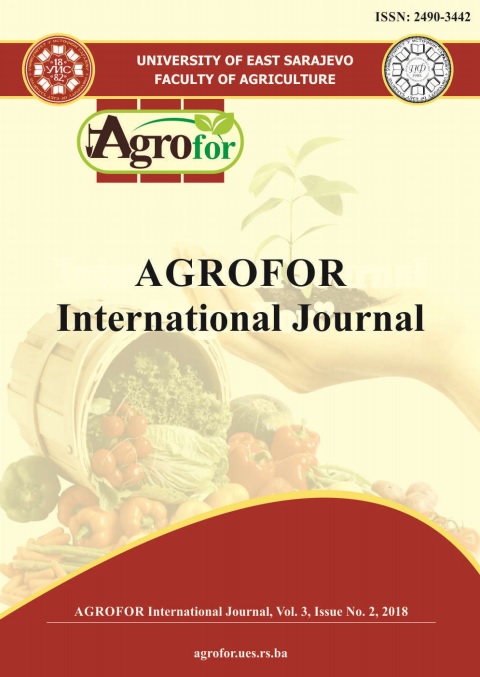ANALYTICAL INDICATORS OF PLUM FRUIT SENSORY CHARACTERISTIC CHANGES AFTER SEVEN-DAY STORAGE AT ROOM TEMPERATURE
DOI:
https://doi.org/10.7251/AGRENG1802049PAbstract
Consumer acceptance of plum is based, primarily, on the corresponding sensory
characteristics of the fruits: appearance, colour, firmness, taste and aroma. If not
consumed immediately after harvesting, the aforementioned characteristics of plum
will change. Still, those changes are less expressed when fruits are kept in cold
storage, at low temperatures. However, during the transport and storage of plum at
room temperature, which is often the case in local market plum sale, intense
changes of certain characteristics of the fruit happens as well as a significant
shortening of shelf life. The most expressive is firmness change where fruits
become completely soft after seven days. Appearance and colour of the fruit are
less susceptible to change. Since plum taste and odour depend on sugar and acid
content, i.e., sugar-acid ratio and the content of certain volatile aromatic
components, changes of their contents have been examined in some important
plum cultivars in Serbia after seven-day storage at the temperature 20±1 °C. Sugaracid
ratio that determines sweetness, i.e., fruit acidity, has not significantly changed
during thе storage period. Among 10 examined aromatic components, the most
significant changes have been observed in 2-E-hexenal, which gives a distinctive
green note aroma and nonanal, characteristic plum-like scent. During the seven-day
storage of picked plums, the content of 2-E-hexenal decreased while the content of
nonanal increased.

